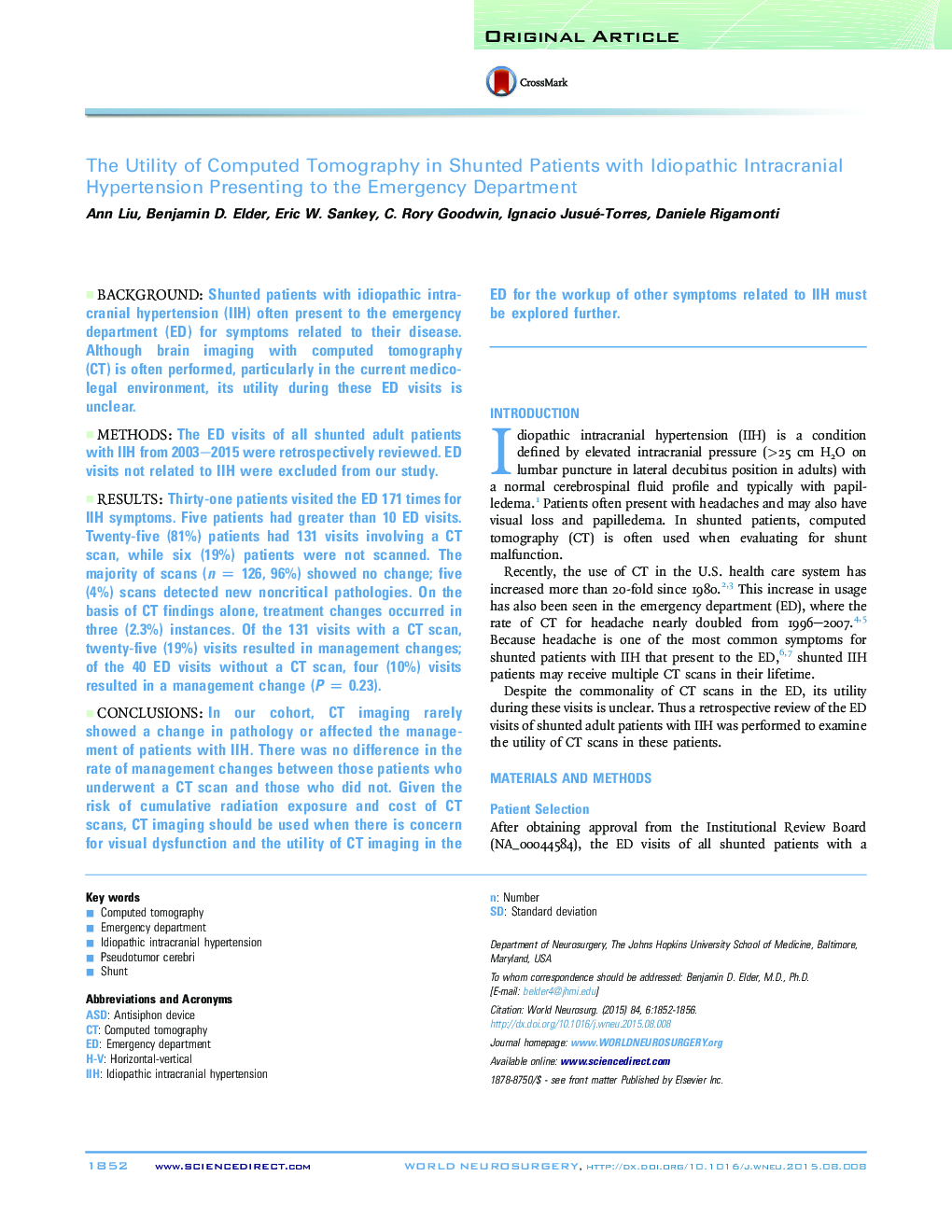| Article ID | Journal | Published Year | Pages | File Type |
|---|---|---|---|---|
| 6044529 | World Neurosurgery | 2015 | 5 Pages |
BackgroundShunted patients with idiopathic intracranial hypertension (IIH) often present to the emergency department (ED) for symptoms related to their disease. Although brain imaging with computed tomography (CT) is often performed, particularly in the current medicolegal environment, its utility during these ED visits is unclear.MethodsThe ED visits of all shunted adult patients with IIH from 2003-2015 were retrospectively reviewed. ED visits not related to IIH were excluded from our study.ResultsThirty-one patients visited the ED 171 times for IIH symptoms. Five patients had greater than 10 ED visits. Twenty-five (81%) patients had 131 visits involving a CT scan, while six (19%) patients were not scanned. The majority of scans (n = 126, 96%) showed no change; five (4%) scans detected new noncritical pathologies. On the basis of CT findings alone, treatment changes occurred in three (2.3%) instances. Of the 131 visits with a CT scan, twenty-five (19%) visits resulted in management changes; of the 40 ED visits without a CT scan, four (10%) visits resulted in a management change (P = 0.23).ConclusionsIn our cohort, CT imaging rarely showed a change in pathology or affected the management of patients with IIH. There was no difference in the rate of management changes between those patients who underwent a CT scan and those who did not. Given the risk of cumulative radiation exposure and cost of CT scans, CT imaging should be used when there is concern for visual dysfunction and the utility of CT imaging in the ED for the workup of other symptoms related to IIH must be explored further.
